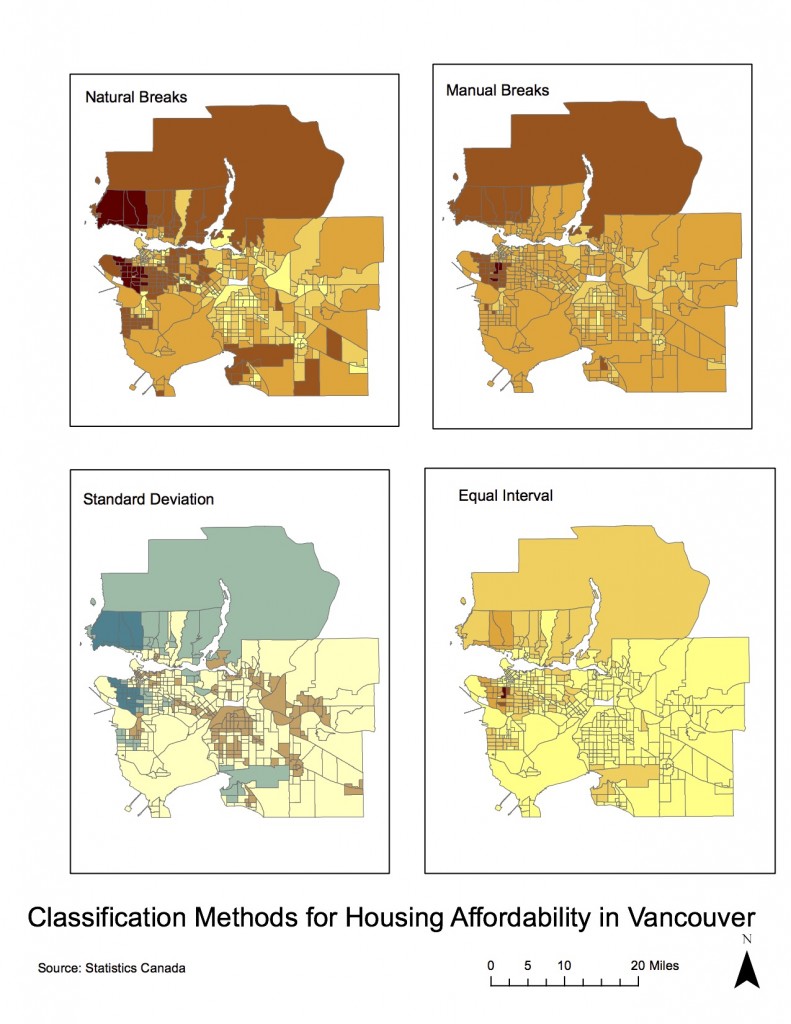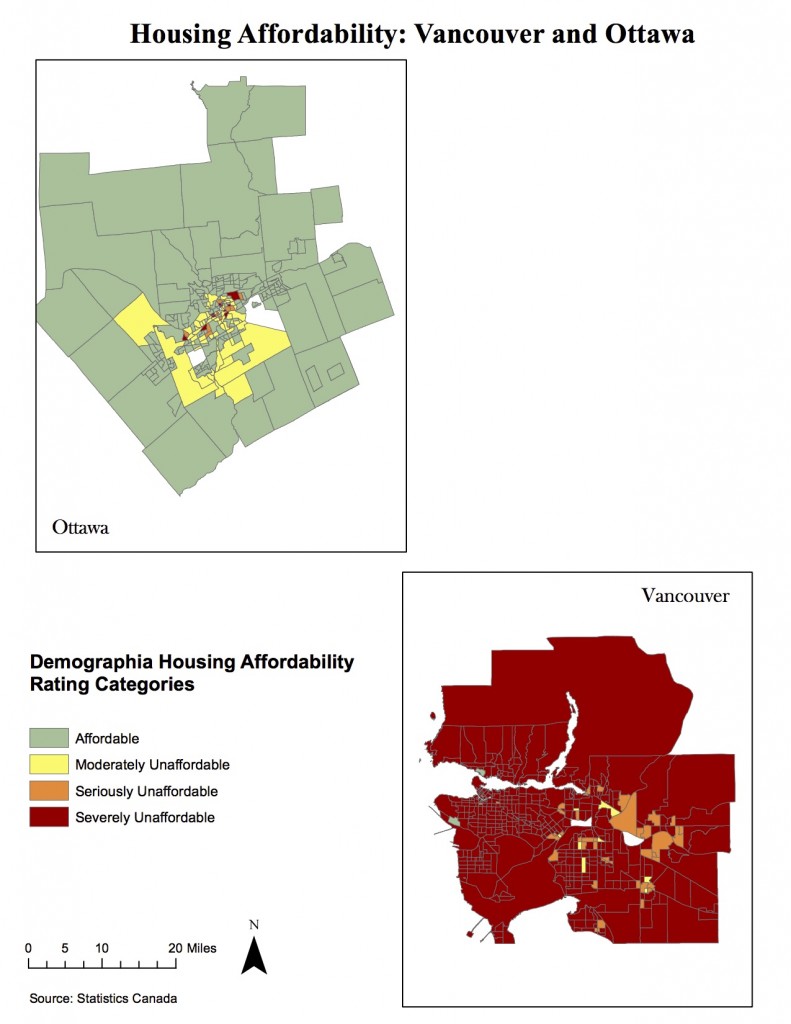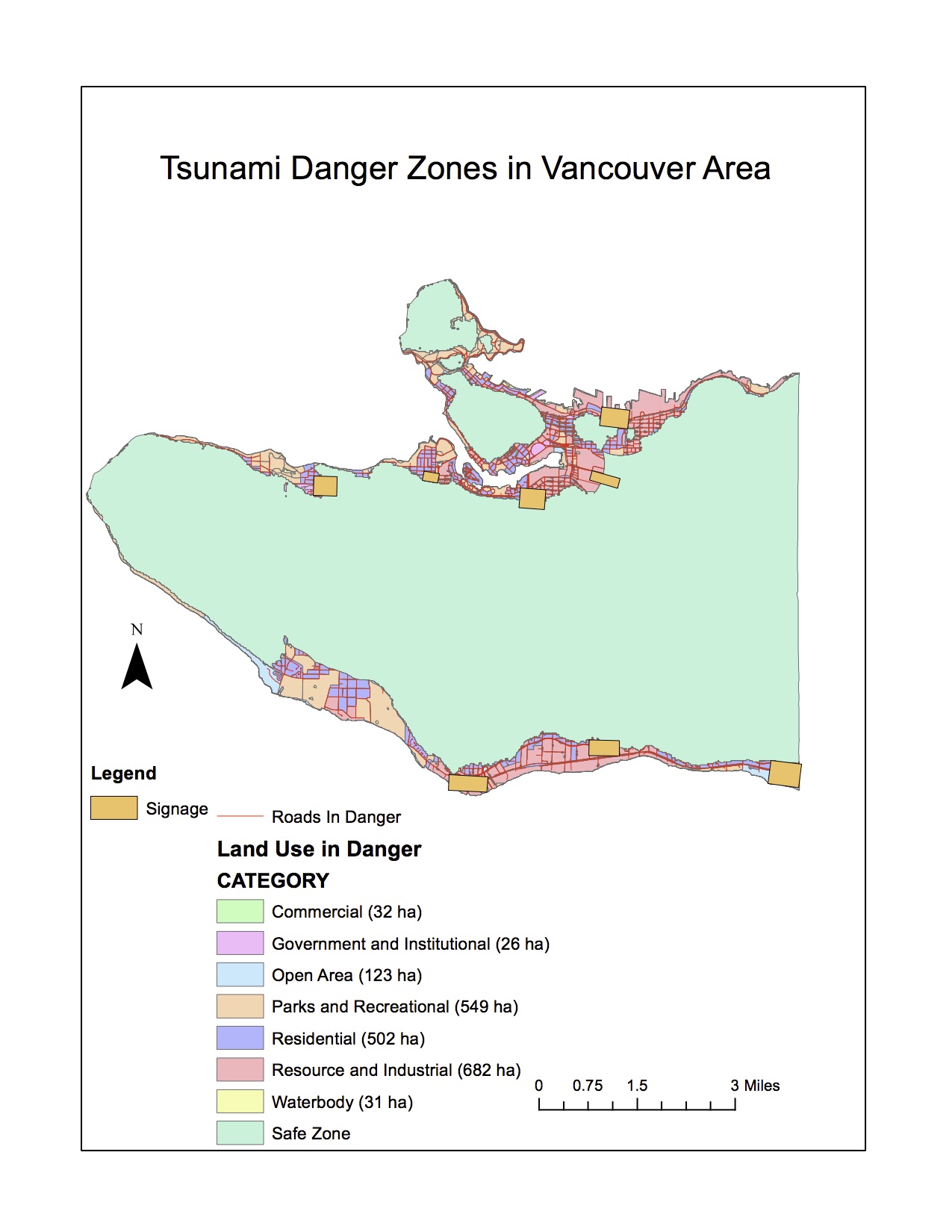The Garibaldi at Squamish Project, a mountain resort 15 km north of Squamish and 80 km north of Vancouver, has recently been tentatively approved for construction. However, its effects on vegetatio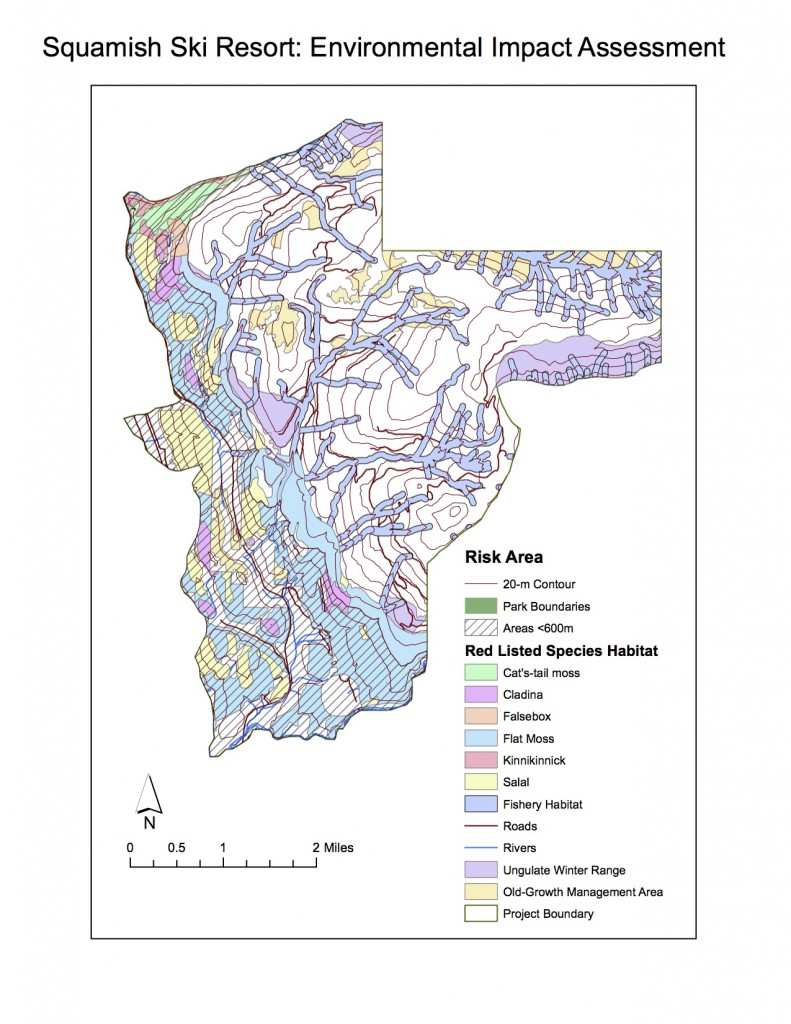 n, fish and wildlife habitat are still controversial and call for further investigation. In this report, prepared for the British Columbia Snowmobile Federation (BCSF), an environmental impact assessment of the project through the use of GIS was performed in order to evaluate whether there was sufficient evidence to oppose the project.
n, fish and wildlife habitat are still controversial and call for further investigation. In this report, prepared for the British Columbia Snowmobile Federation (BCSF), an environmental impact assessment of the project through the use of GIS was performed in order to evaluate whether there was sufficient evidence to oppose the project.
For the analysis, spatial data regarding ungulate winter range and old growth management areas was acquired from DataBC and matched to the project area, showing that 3.17% of the project lies in old growth forest area and that 7.89% lies in ungulate winter range. Terrestrial ecosystem mapping data was used for determining habitats of red-listed species by matching biogeoclimatic units and site series of red-listed species with the mapping data. Through this, it was determined that the project area includes important habitat for falsebox, salal, cladina, kinnikinnick, flat moss and cat’s-tail moss populations, six important red-listed species. This habitat represented 24.8% of the project area.
To determine the effect of the project on fish bearing streams and riparian areas, river data from Terrestrial Resource Information Management was obtained and a buffer zone of 50 meters was established for rivers at higher elevations (above 600m) and of 100 meters for lower elevations (below 600 meters). This distinction was made due to the fact that high- elevation streams have lower probabilities of being fish-bearing. The analysis found that 15.9% of the project area would be of high risk for fish habitat and riparian areas.
By joining all protected/high-risk areas, it was determined that 47.7% of the project area lied within vulnerable territory; a high percentage which certifies that there is, in fact, enough evidence for opposing the project.
Another claim that has been made by opposing agencies is the fact that the project’s location will not allow for enough snow and, therefore, it will not be successful as a ski resort. Digital elevation model data was used to select all the territory that lied below 600 meters and determine that 31.8% of the project area would, in fact, have a low potential for snowfall.
The greatest environmental concerns to the project appear to be the interference with red- listed species habitat and the potentia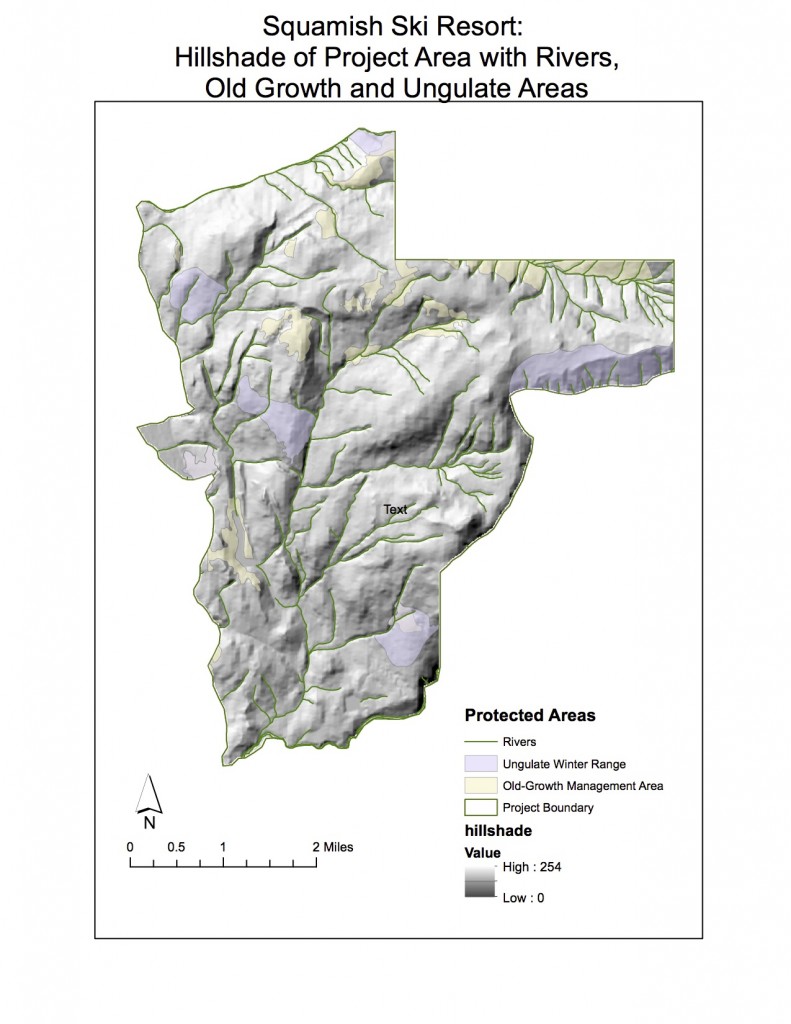 l harm to fish bearing streams and riparian/fish habitat. This area provides an important habitat for species that are scarcely found in other places, and the impact of the project would most likely have a strong effect on displacing them or eradicating them. If the ski is to be, nonetheless, constructed, one way to mitigate it would be to promote projects and initiatives within the resort itself for the protection of these species. For example, hiring biologists to monitor and take care of endangered species, while providing a habitat for them within the resort would be a way of reducing the resort’s effects while at the same time providing an economic benefit to the resort, since these areas could act like a tourist attraction where visitors could get a closer look
l harm to fish bearing streams and riparian/fish habitat. This area provides an important habitat for species that are scarcely found in other places, and the impact of the project would most likely have a strong effect on displacing them or eradicating them. If the ski is to be, nonetheless, constructed, one way to mitigate it would be to promote projects and initiatives within the resort itself for the protection of these species. For example, hiring biologists to monitor and take care of endangered species, while providing a habitat for them within the resort would be a way of reducing the resort’s effects while at the same time providing an economic benefit to the resort, since these areas could act like a tourist attraction where visitors could get a closer look
at wildlife.
The effect on fish bearing streams and riparian ecosystems is extremely important, as these areas are of great significance to surrounding productivity and biodiversity. Being located in an area of high biodiversity and water habitats, the resort could prove highly detrimental. Ways of mitigating this effect could be to carefully map all river areas and their surrounding areas (as done in this project) and avoid or limit construction of lifts, ski runs or buildings around, or on, these areas. Managing for waste and effluent discharge would be of high importance as well. The report does not recommend the development of the ski resort and proves that there is enough evidence to oppose it. However, if it is to be constructed, it recommends strong and careful management of the potential environmental effects.
Personal Opinion
It is easy to find oneself working on projects that do not coincide with one’s view. In this case, the methodology analysis was planned before hand and the concluding statements within the report are mainly an extension of the results found. It happens to be, however, that I personally don’t think that the project should be allowed to continue. As a hiker and skier who has gotten around to enjoying the natural beauty of the area, I am dismayed by the severity of the potential impact of this project. Even though the idea of an extensive ski resort closer to Vancouver than Whistler does sound appealing, the cost of the effect on surrounding species, forests and riparian areas (whose restoration and management I am especially interested in) would greatly surpass the benefits. In fact, this would especially be so if more than 30% of the area has the potential for a very limited amount of snowfall.
Accomplishment Statement:
Parsed and filter data and used different spatial analyst tools in order to assess the suitability and environmental impact of a real-life project north of Vancouver.

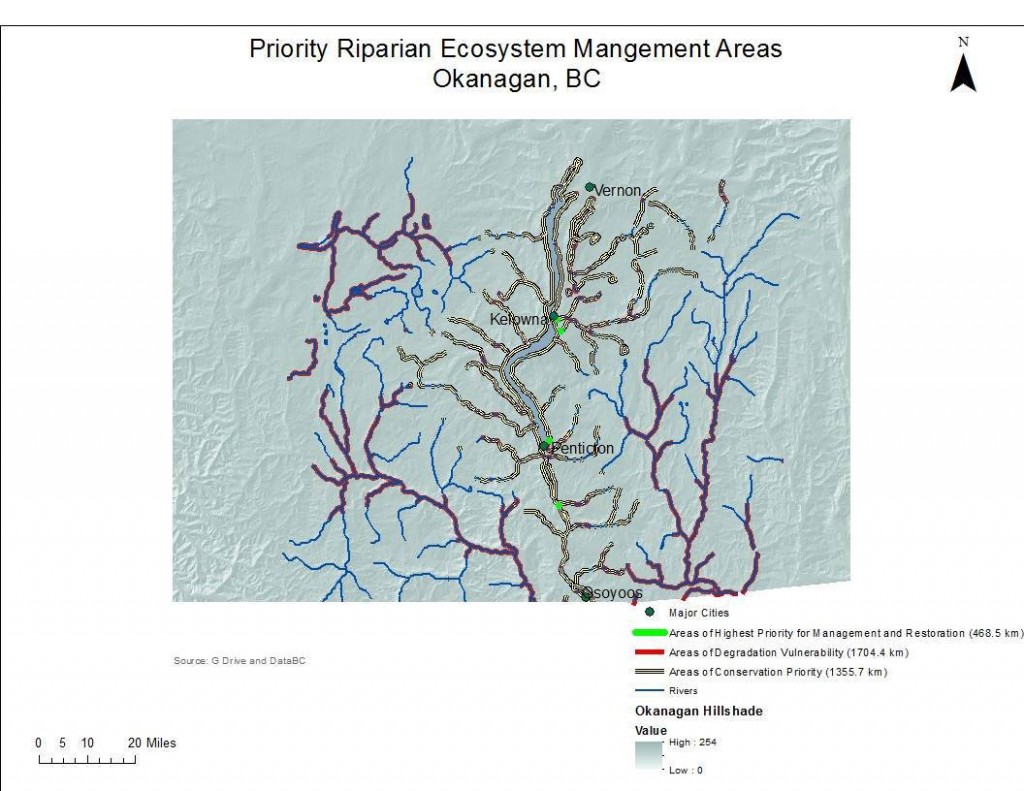
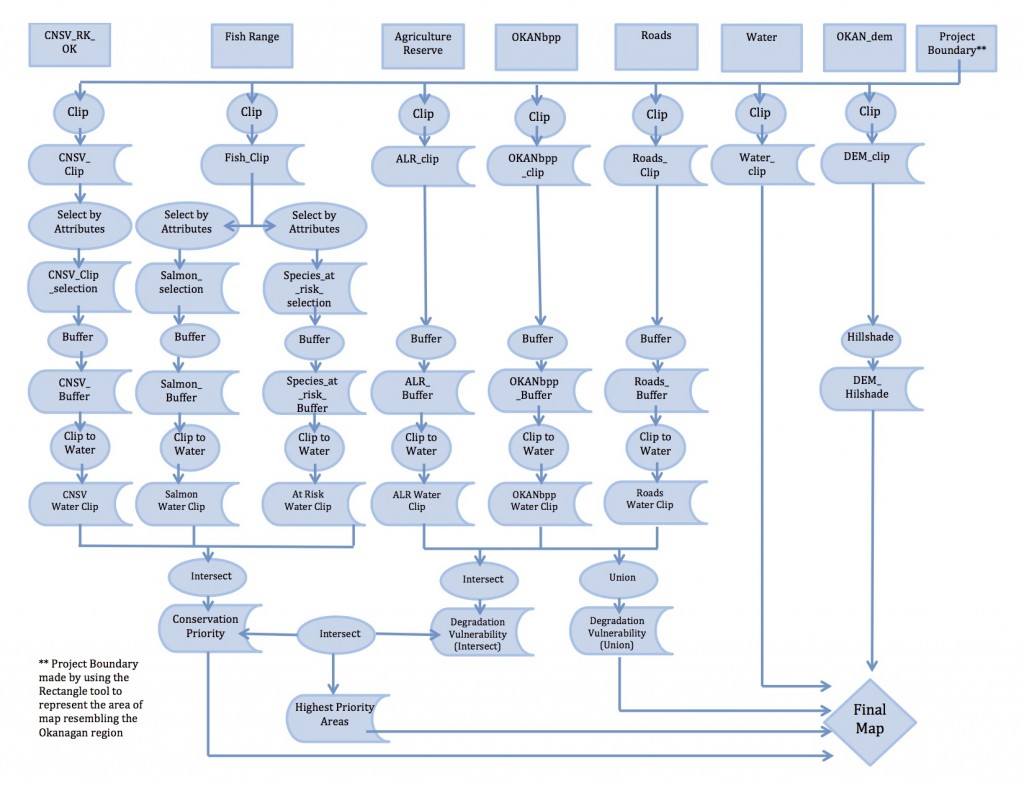
 n, fish and wildlife habitat are still controversial and call for further investigation. In this report, prepared for the British Columbia Snowmobile Federation (BCSF), an environmental impact assessment of the project through the use of GIS was performed in order to evaluate whether there was sufficient evidence to oppose the project.
n, fish and wildlife habitat are still controversial and call for further investigation. In this report, prepared for the British Columbia Snowmobile Federation (BCSF), an environmental impact assessment of the project through the use of GIS was performed in order to evaluate whether there was sufficient evidence to oppose the project. l harm to fish bearing streams and riparian/fish habitat. This area provides an important habitat for species that are scarcely found in other places, and the impact of the project would most likely have a strong effect on displacing them or eradicating them. If the ski is to be, nonetheless, constructed, one way to mitigate it would be to promote projects and initiatives within the resort itself for the protection of these species. For example, hiring biologists to monitor and take care of endangered species, while providing a habitat for them within the resort would be a way of reducing the resort’s effects while at the same time providing an economic benefit to the resort, since these areas could act like a tourist attraction where visitors could get a closer look
l harm to fish bearing streams and riparian/fish habitat. This area provides an important habitat for species that are scarcely found in other places, and the impact of the project would most likely have a strong effect on displacing them or eradicating them. If the ski is to be, nonetheless, constructed, one way to mitigate it would be to promote projects and initiatives within the resort itself for the protection of these species. For example, hiring biologists to monitor and take care of endangered species, while providing a habitat for them within the resort would be a way of reducing the resort’s effects while at the same time providing an economic benefit to the resort, since these areas could act like a tourist attraction where visitors could get a closer look